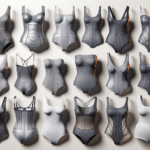3D Printers for Home Use
3D printing technology has become increasingly accessible, making it possible for individuals to own a 3D printer at home. This advancement opens up a world of creativity and innovation, allowing hobbyists and small business owners to create prototypes, custom parts, and even art pieces from the comfort of their homes. When considering a 3D printer for home use, it’s important to evaluate your specific needs and budget. Home 3D printers come in various types, including Fused Deposition Modeling (FDM) and Stereolithography (SLA), each offering unique benefits. FDM printers are generally more affordable and suitable for larger prints, while SLA printers, often resin-based, provide high-resolution details, perfect for intricate designs.
Before purchasing, consider the printer’s build volume, print speed, and compatibility with different materials. Many home users start with an FDM printer due to its affordability and ease of use, but those interested in detailed or artistic projects may opt for an SLA printer. Additionally, the availability of user-friendly software and community support can significantly enhance the home printing experience, making it easier to troubleshoot and learn new techniques.
Resin 3D Printers
Resin 3D printers, also known as SLA printers, are renowned for their ability to produce highly detailed and smooth finishes, making them ideal for applications requiring precision, such as jewelry design, miniatures, and dental models. Unlike traditional filament-based printers, resin printers use a liquid resin that is cured layer by layer using a UV light source. This process allows for exceptional accuracy and intricate detailing that is often unmatched by other types of 3D printers.
When considering a resin 3D printer, it’s important to factor in the cost of resin and the necessary post-processing equipment, such as UV curing stations. While resin printers can be more expensive initially, the quality of prints they produce can justify the investment for those needing detailed work. Furthermore, advancements in resin technology have led to a wider range of materials, including flexible, tough, and even biocompatible resins, expanding the possibilities for creative and functional applications.
For those new to resin printing, it’s advisable to start with a beginner-friendly model that offers easy setup and operation. Many manufacturers provide comprehensive guides and customer support to assist users in navigating the intricacies of resin printing, ensuring a smooth transition into this advanced form of 3D printing.
Used 3D Printers for Sale
Purchasing a used 3D printer can be a cost-effective way to enter the world of 3D printing without breaking the bank. The second-hand market offers a variety of models, from basic to advanced, allowing buyers to find a printer that suits their needs and budget. When considering a used 3D printer, it’s crucial to conduct thorough research and inspect the machine’s condition. Key factors to evaluate include the printer’s age, usage history, and any signs of wear or damage.
Buying from reputable sources, such as established online marketplaces or local 3D printing communities, can increase the likelihood of finding a reliable machine. Additionally, reaching out to the seller for detailed information and, if possible, a demonstration of the printer in action can provide reassurance regarding its functionality.
For those new to 3D printing, opting for a used model with a strong user community can be beneficial, as it offers access to support and troubleshooting advice. Many 3D printing enthusiasts are eager to share their knowledge and experiences, making it easier for beginners to learn the ropes and make the most of their new investment.


